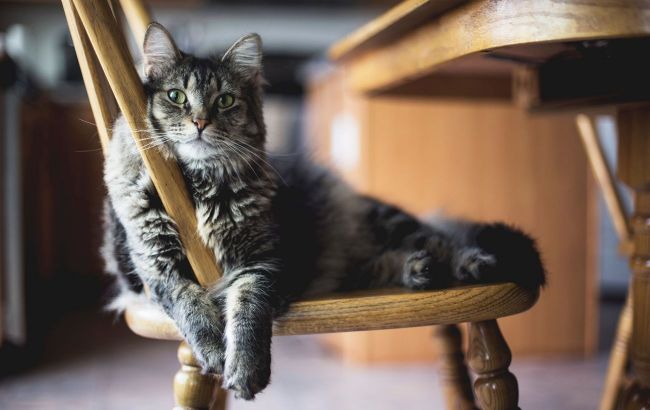Real reason why cats vibrate when they purr
 Purring cats appeal to many (photo: Freepik)
Purring cats appeal to many (photo: Freepik)
The behavior of cats is not always understandable to humans, although some of their traits are common and encountered in most individuals. For example, do you know why these fluffy creatures vibrate when they purr?
Facts about the reasons and mechanisms of such feline behavior.
The following sources were used in preparing the material: Science Alert, 24Petwatch, New Scientist.
When cats purr
According to researchers, cats can purr for various reasons:
- to express pleasure and gratitude - when they are petted, cuddled, and pampered
- to attract attention - to flirt and play
- to communicate
- to relieve stress - if the animals feel anxious (for example, after a fight or during labor)
- to heal and recover - the frequency of cat purring ranges from 25-150 Hz (these frequencies of sound waves are used in modern physiotherapy for treatment and recovery)
- to indicate illness - if the animal purrs continuously, it should be alarming, as it may be a sign of illness.
In general, veterinarians advise paying attention to the character of a fluffy's purring under various circumstances and consulting specialists if the nature of the sounds or vibrations has changed and causes concern.

Cats are wonderful creatures (illustrative photo: pixabay.com)
Why do cats purr and how do they vibrate
Why cats purr and vibrate during this process is a complex question. In general, most scientists lean towards the idea that a cat's purring is caused by muscles located inside the throat.
During movement, they expand and contract the glottis - a part of the throat around the vocal cords. According to this theory, every time a cat (or kitten) inhales and exhales, the air vibrates and creates the purring process.
At the same time, some doubt this theory because science cannot yet explain with 100% certainty what exactly causes purring.
Another version regarding cats' purring
At the end of 2023, a group of scientists led by Christian Herbst from the University of Vienna conducted research on the possible cause of the characteristic purring of cats.
They determined that such behavior of fluffy creatures could be an automatic process - passive aerodynamic behavior that continues after receiving the initial signal from the brain.

Purring of cats is a real mystery (illustrative photo: pixabay.com)
Within the experiment, scientists removed the larynx (where the vocal cords are located) from eight deceased cats. When these cords were squeezed and pushed through with warm, moist air, they produced the sound of purring in the range of 25-30 Hz - thanks to the independent vibrations of the vocal folds.
This process occurred without any muscle contractions or neural information.
"These low-frequency vibrations of the vocal folds involve a special mode of phonation with an extremely long closed quotient, reminiscent of the strohbass in humans," explained the researchers.
It is worth noting that strohbass is a type of phonation where the vocal cords vibrate but do not tense up (resulting in a low, raspy sound).
In animals, according to scientists, everything may work similarly - collagen and elastin fibers in the connective tissues of the vocal cords dampen the high frequencies of their sounds.
However, studying muscle contractions in live cats is much more challenging, so the ultimate cause of purring remains a mystery.
Earlier, we discussed whether it is suitable to feed cats raw fish.

